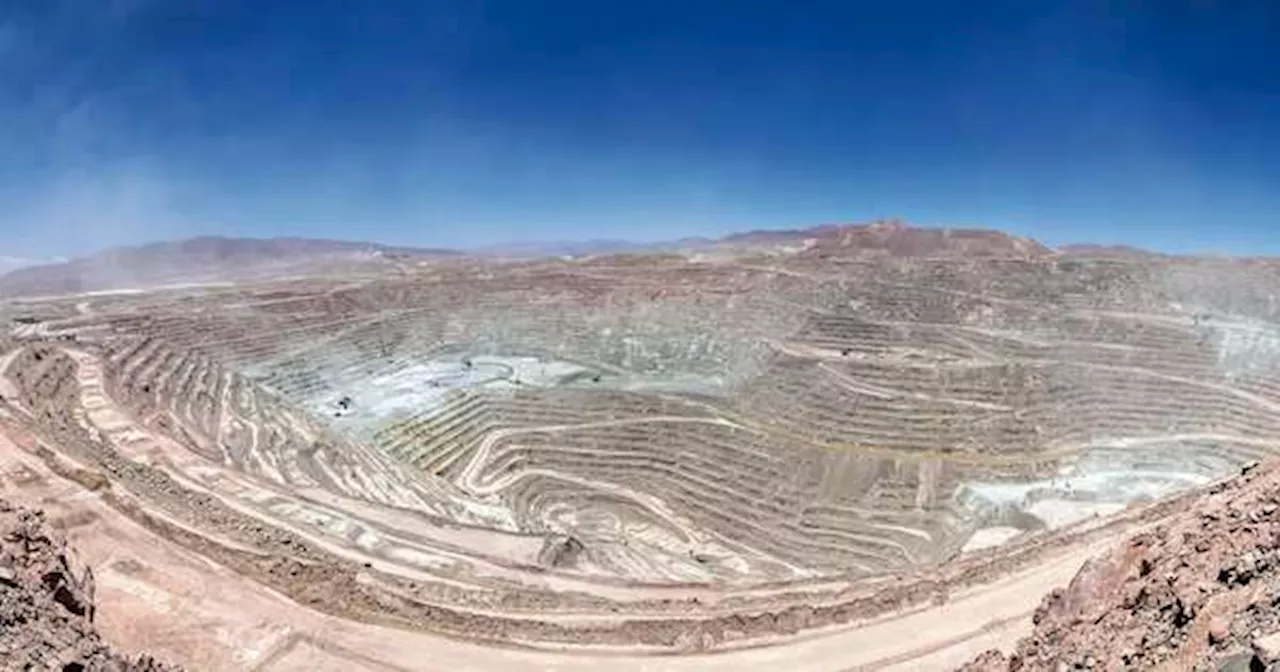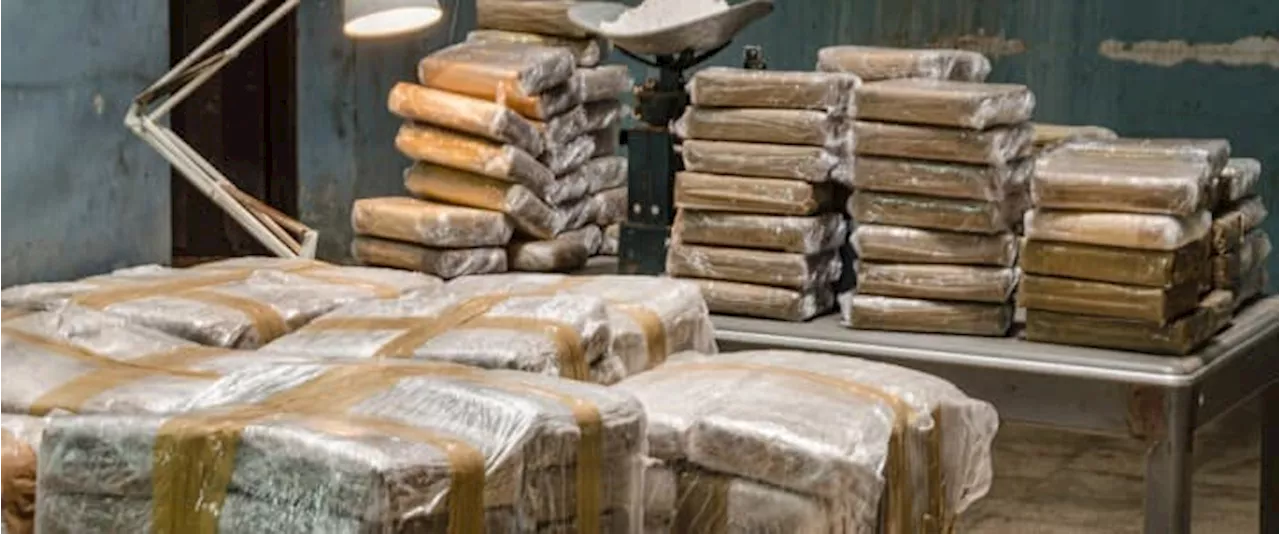Colombia's cocaine production has reached an unprecedented level for the 10th consecutive year, according to the UNODC. Despite government efforts and US backing, the country continues to be the world's leading coca cultivator, fueling a booming cocaine trade that drives insecurity, corruption, and economic instability.
Colombia's cocaine production has reached another record high for the 10th consecutive year, according to the UN Office on Drugs and Crime ( UNODC ). The organization estimates that annual output in 2023 surged by 52% compared to the previous year, reaching a staggering 2,664 metric tons. This unprecedented level of production highlights the persistent challenge faced by the Colombian government, despite substantial resources committed to disrupting the illicit drug trade .
This booming cocaine industry fuels serious security concerns and widespread corruption, damaging key economic sectors. Notably, the petroleum industry, Colombia's most valuable export earner, is particularly vulnerable. Colombia has consistently held the title of the world's leading coca cultivator since the 1990s, with a brief exception from 2011 to 2012. The coca plant, native to South America, has been chewed for centuries by Indigenous populations to boost energy and combat altitude sickness. Its alkaloid-rich leaves are the essential ingredient in producing cocaine hydrochloride, a highly addictive stimulant consumed globally.Despite a multi-billion-dollar, US-backed war on drugs that began in the 1980s, cocaine production continues to escalate. This sustained conflict not only failed to curb the flow of cocaine but also prolonged Colombia's civil war, claiming hundreds of thousands of lives, predominantly civilians. Several factors contribute to this enduring problem, primarily the weakness of the Colombian state, exacerbated by a protracted multi-party conflict rooted in inequality, Cold War politics, and foreign interference. Widespread poverty and lawlessness create fertile ground for illicit economies, allowing the cocaine trade to flourish. While the cocaine trade existed in Colombia since the early 1970s, its global prominence emerged with the formation of the Medellin and Cali Cartels in the late 1970s. This marked Colombia's establishment as a leading cocaine exporter.The immense profits generated by cocaine attracted numerous illegal armed groups across Latin America, intensifying the ongoing civil war in Colombia. Cartels, leftist guerrillas, and right-wing paramilitaries all battled for control of this lucrative billion-dollar industry, fueling a vicious cycle of violence and lawlessness that perpetuated the conditions necessary for the cocaine trade to thrive.Interestingly, large-scale coca cultivation did not take place in Colombia during the Medellin Cartel's peak power in the 1980s. Estimates suggest that only 32,000 acres (13,000 hectares) were dedicated to coca cultivation at that time, a fraction of the current acreage. Both the Medellin and Cali Cartels, the world's largest drug suppliers at the time, relied on coca paste imported from Bolivia and Peru to produce cocaine for the US and European markets. This changed with the emergence of other armed groups, particularly right-wing paramilitary death squads and the Revolutionary Armed Forces of Colombia (FARC). The arrival of the United Self-Defense Forces of Colombia (AUC) in April 1997 proved to be a turning point. This paramilitary umbrella group was financed from the outset by the cocaine trade, receiving payments from various trafficking groups, notably the Norte de Valle Cartel. The AUC's formation ushered in an era of large-scale coca cultivation in Colombia. The paramilitary leadership, who were major drug traffickers, rapidly secured the supply of coca leaves, the crucial ingredient for cocaine production.This ultraviolent group, responsible for most civilian deaths during Colombia's armed conflict, gained control over significant portions of the economy, forging ties with politicians, security forces, and domestic and international corporations. By 1998, just a year after the AUC's formation and years after the fall of the Medellin and Cali cartels, an estimated 200,000 acres (80,000 hectares) of coca were being cultivated in Colombia, over six times the acreage used a decade earlier. Since then, the amount of coca cultivated in Colombia has continued to surge, reaching annual record highs.The cultivation of coca and its transformation into cocaine hydrochloride became a driving force behind Colombia's civil war, prolonging the conflict. UNODC data reveals that the land under coca cultivation in 2023 expanded by 10% year-on-year, reaching a record 625,176 acres (253,000 hectares). This alarming trend poses a significant challenge to Colombia's future stability and economic development
COLOMBIA COCAINE DRUG TRADE UNODC CIVIL WAR SECURITY CORRUPTION ECONOMY
United Kingdom Latest News, United Kingdom Headlines
Similar News:You can also read news stories similar to this one that we have collected from other news sources.
 Cocaine Bear Now Streaming on NetflixBased on a true story from 1985, Cocaine Bear follows a grizzly bear who consumes a large amount of cocaine and goes on a rampage. Directed by Elizabeth Banks and starring Ray Liotta in one of his final roles, the film combines horror, comedy, and action. The film was inspired by the real-life incident of a drug smuggler dropping a large amount of cocaine in the Chattahoochee National Forest, leading to the death of a bear from a cocaine overdose.
Cocaine Bear Now Streaming on NetflixBased on a true story from 1985, Cocaine Bear follows a grizzly bear who consumes a large amount of cocaine and goes on a rampage. Directed by Elizabeth Banks and starring Ray Liotta in one of his final roles, the film combines horror, comedy, and action. The film was inspired by the real-life incident of a drug smuggler dropping a large amount of cocaine in the Chattahoochee National Forest, leading to the death of a bear from a cocaine overdose.
Read more »
 Chile's Copper Production to Reach 5.54Mt in 2034Chile's state copper commission, Cochilco, projects copper production to reach 5.54 million tonnes in 2034, a 5.6% increase from 2023. The figure is lower than previous projections due to a change in methodology. Peak production is expected in 2027 with 6.07 million tonnes. While cathode production is projected to decline, concentrate production will strengthen due to the greater availability of sulphide minerals. Chile is still expected to remain the leading global copper producer, with its share of global production increasing from 23.6% in 2024 to 27.3% in 2034.
Chile's Copper Production to Reach 5.54Mt in 2034Chile's state copper commission, Cochilco, projects copper production to reach 5.54 million tonnes in 2034, a 5.6% increase from 2023. The figure is lower than previous projections due to a change in methodology. Peak production is expected in 2027 with 6.07 million tonnes. While cathode production is projected to decline, concentrate production will strengthen due to the greater availability of sulphide minerals. Chile is still expected to remain the leading global copper producer, with its share of global production increasing from 23.6% in 2024 to 27.3% in 2034.
Read more »
 Teen Sensation Littler Needs 10th Gear to Edge Joyce at Ally PallyLuke Littler, the rising star of darts, narrowly escaped an upset by Ryan Joyce at the World Darts Championship, advancing to the quarter-finals with a hard-fought 4-3 victory.
Teen Sensation Littler Needs 10th Gear to Edge Joyce at Ally PallyLuke Littler, the rising star of darts, narrowly escaped an upset by Ryan Joyce at the World Darts Championship, advancing to the quarter-finals with a hard-fought 4-3 victory.
Read more »
 Newcastle Aim for 10th Straight Win Against BournemouthNewcastle United host Bournemouth in a Premier League match seeking their 10th consecutive victory. The Magpies are on a roll, while Bournemouth faces challenges in recent fixtures.
Newcastle Aim for 10th Straight Win Against BournemouthNewcastle United host Bournemouth in a Premier League match seeking their 10th consecutive victory. The Magpies are on a roll, while Bournemouth faces challenges in recent fixtures.
Read more »
 Cameron Diaz Celebrates 10th Anniversary with Benji Madden and Return to ActingCameron Diaz and Benji Madden marked their 10th wedding anniversary with a rare selfie, coinciding with Diaz's return to acting in the Netflix film 'Back In Action'. Madden praised his wife, calling her his 'best friend' and celebrating her as a wife, mother, friend, partner, boss, and lover.
Cameron Diaz Celebrates 10th Anniversary with Benji Madden and Return to ActingCameron Diaz and Benji Madden marked their 10th wedding anniversary with a rare selfie, coinciding with Diaz's return to acting in the Netflix film 'Back In Action'. Madden praised his wife, calling her his 'best friend' and celebrating her as a wife, mother, friend, partner, boss, and lover.
Read more »
 Cameron Diaz and husband Benji Madden pose in rare selfie to celebrate 10th anniversaryJamie Foxx and Cameron Diaz show off their comedy chops and amazing action moves in the fun and thrilling trailer for their film 'Back in Action' releasing January 17 on Netflix.
Cameron Diaz and husband Benji Madden pose in rare selfie to celebrate 10th anniversaryJamie Foxx and Cameron Diaz show off their comedy chops and amazing action moves in the fun and thrilling trailer for their film 'Back in Action' releasing January 17 on Netflix.
Read more »
